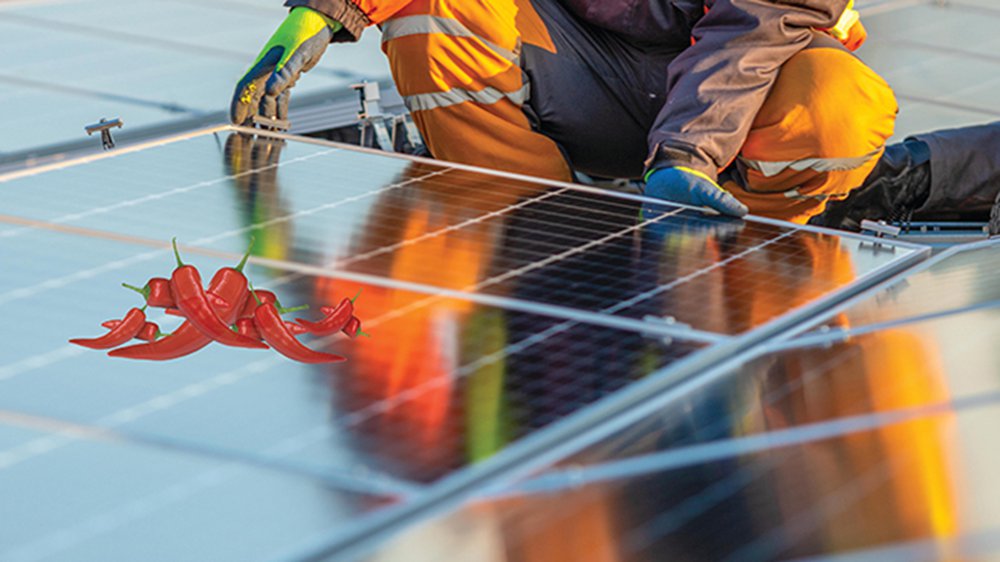Question Your World: What Do Chili Peppers and Solar Technology Have in Common?
What do the alternative rock band Red Hot Chili Peppers have in common with solar technology? Umm, maybe not a lot. But what do hot chili peppers and solar technology have in common? Something really interesting, actually! What do chili peppers and solar technology have in common?
This week’s science report is for folks who appreciate that beautiful overlap of spicy chili peppers and renewable energy. This is not the first time we’ve chatted about the wonders of what science can find within chili peppers, but this is the first time it’s about solar technology. Let’s get cooking.
Capsaicin is the active compound in chili peppers that produces that spicy, fiery heat you experience when eating them. Impressively, this chemical compound can also be used topically as an ointment for minor aches and pains, it’s a great toxic-free insecticide option, it has antidepressant qualities, and might even aid with gastrointestinal conditions, various cancers, dermatologic issues, and much more! Of course, on top of all that capsaicin also makes a lot of our meals just tasiter and zestier.

You know what else is getting spicier from this compound? Solar technology!
Solar is a rapidly growing sector of the renewable energy industry, and researchers are testing new designs all the time. For example, cutting-edge perovskite solar cells are more efficient at producing electricity than the current silicon solar cells we see in the marketplace. So, what’s the problem? Well, their long-term stability, maintenance, and price raise concerns for more widespread use. However, recently scientists applied the amazing spicy chemical compound capsaicin to these pervoskite solar cells and observed they were not only more stable long term, but also more efficient!

The team has much more research to do to understand why this is happening. One hypothesis is that adding capsaicin increases the number of electrons on the surface of the cell, thus making the energy transfer process more efficient. But more testing and research is needed before those claims can be confirmed.
Regardless, it’s a cool update on a hot new idea, and highlights the options being explored to provide cleaner energy in our pursuit of a climate-resilient world. Once the research is done and we finally know what’s going on with these spicy solar cells, you know what we’re going to do with that information? In honor of the chili peppers, we’re gonna give it away, give it away, give it away now!


